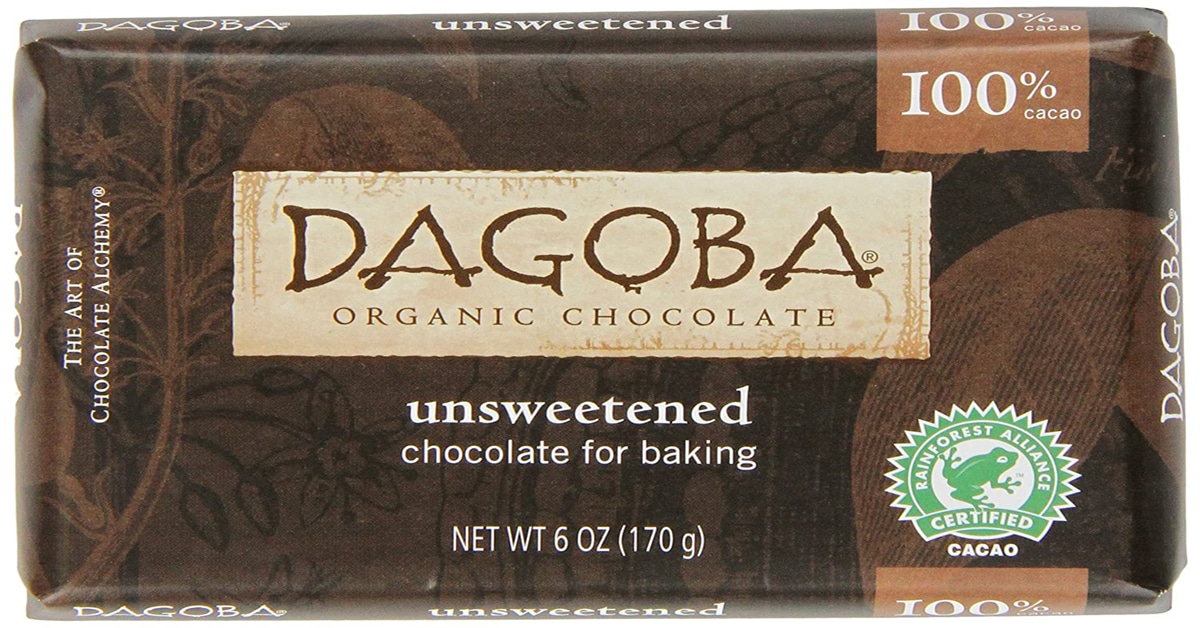Dagoba Chocolate (History, Ingredients & Marketing)
If you love organic products, organic chocolate is probably at the top of the list. There are organic chocolate brands out there but they are not all created equal. If you want really good chocolate that has been responsibly sourced and created, you need to try Dagoba. This is a newer brand of candy products but it is a really good one. You can trust these products to be highly flavorful, enjoyable, and totally unique in ways that other organic candy products are not. The sustainability-friendly and women-centric work that is linked with these products also make them stand out.
This is one of the fair trade products that seek to break ties with the colonial relationships that have been the backbone of the chocolate industry for years. The social equity question related to many products has rightfully come under scrutiny in the last decade and Dagoba seeks to make chocolate that does not harm anyone or preserve colonial history.
Please leave a review or any memories of this snack in the comments at the bottom of this page. Thank you!
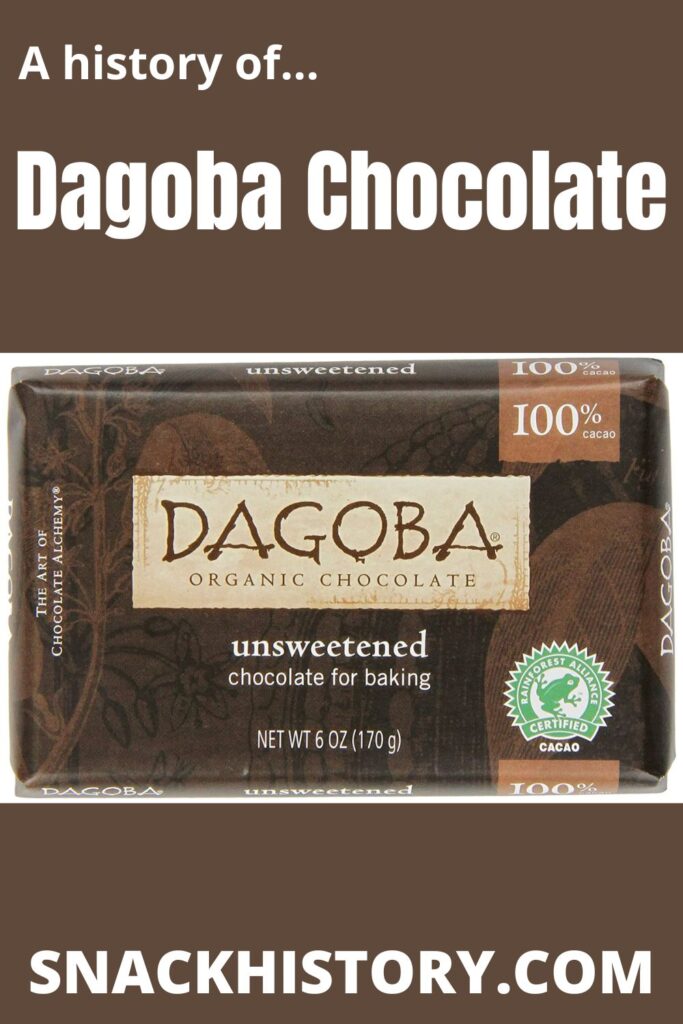
History
The Dagoba brand was founded in 2001 by Frederick Shilling. The Hershey Company bought this product in 2006. The brand founders are not involved with the brand any longer but they do still maintain the factory location that creates the chocolates. The original company was based in Ashland, OR and the factory is still located there. This is an unusual relationship for the Hershey Company to maintain with a business, but it is a good way for them to handle the maintenance of this kind of specialty brand.
The Dagoba name comes from Sinhalese and it is a Sanskrit word that means hemispherical dome. The name was meant to indicate the fair trade, non-GMO certified, Rainforest Alliance Certified status of the product as well as the origins of the idea behind it. The Conacado Bar was discontinued after the sale to Hershey’s.
Dagoba was later expanded to include baking chocolates, cacao powder, chocodrops, and drinking chocolate. These products are all made with the same responsible methods that the original bars were made with, but Hershey’s has dropped the fair trade certifications since their purchase of the product. The cacao beans that are used to make the chocolate products are still Rainforest Alliance Certified.
The Dagoba lineup of bars has been expanded to include a variety of different bars under Hershey’s management. This is the main focus of the company at this point and they have continued to expand the list of candy bars without adding other secondary products to the items that they are selling. This is the model of Hershey’s overall and they have always done best with candies that are sold in bar form like this.
Dagoba has made the effort with Hershey’s help to invest in women and to increase the economic opportunities for farmers, entrepreneurs, and more. This is done through the One for All Cacao Project which has been going on since 2016. Hershey has expanded this project to include work in San Juan de Cheni in Peru to help the 30% of the farmers that are female.
The Hershey Company also continues to expand its sustainability efforts related to both the Dagoba product and its other products. They now use 75% sustainable cocoa beans for all of their products. This has been a positive change on the part of Hershey’s and they are likely setting an example for other major candy companies.
Hershey does admit that the Dagoba bars are made with sustainable products but they are now mixed with USDA-certified organic products which have replaced the former organic ingredients that the original products were made with. The company has stuck with the essential oils and the other natural ingredients to maintain the flavor profile.
This product lineup standard has carried through to the bite-sized products as well. You will get a really consistent taste experience from all of the products that are in the Dagoba lineup since they have continued to be made with the original flavor profiles that made the bars famous to start with.
Dagoba Chocolate Bars
- 84% Pure extra bittersweet
- Rich dark 74% bittersweet
- Picante 74% – spicy chocolate which contains chilies, cacao nibs, nutmeg, orange and vanilla
- Dark 59% semisweet
- Lavender blueberry 59% – this bar has blueberries that are flavored with lavender essential oils
- Ginger Lime 37% – Milk flavored with crystallized ginger as well as lime essential oil
- White chocolate 37% which also contains raspberries, vanilla, and peppermint essential oils
- Milk 37%
- Bite-sized morsels
- Bite-sized Gems-variety version of the bite-sized products
Dagoba Drinking Chocolates
- Unsweetened – this is a non-dutched cocoa powder that contains 100% dark chocolate and can sugar
- Authentic- This is non-dutched cocoa powder that contains cane sugar as well as 100% dark chocolate
- Xocolatl – non-dutched cocoa powder with 100% chocolate bits, cane sugar and also chiles and cinnamon
Dagoba also still sells smaller amounts of:
- Cacao powder which is non-dutched
- Chocolate drops which are 74% bittersweet
- Baking bars that come in both 59% and 100%
All of the various branded items and flavors are explained a bit like essential oils and they are linked with emotions, feelings, and experiences that you can have with a Dagoba bar of that particular flavor in hand. The varieties are explained in basic language but then are backed up by statements of their “calming” nature or their ability to bring some “divine” happiness to your day. This is a key factor that is used to market and promote all of these different products and it remains from when the company was based in Oregon.
Packaging
Dagoba has always had really attractive packaging. The original packaging was a bit different and the candies were wrapped in solid-colored wrappers. The colors of the original wrappers were linked to the variety of bars but they were otherwise consistent. The design was simple, clean, and easy to read and understand. This was one of the key and unique things that made this candy bar different from others on the market, even in this space.
The current bars are packaged with cardboard-colored backgrounds and dark black design features. The different varieties are labeled with different colored stickers and the brand name at the top. The simple design is in keeping with the way that most fair trade products are sold. This is a common organic packaging style as well.
The packaging also declares that the products are non-GMO and kosher certified. The rainforest alliance is mentioned as well. This is a brand that cares about making it clear that these products are organic as well as sustainably sourced. The new packaging also includes a small image of a woman on each bar and the small woman image is stamped into each bar itself as well.
This is to show the bond between Dagoba and their efforts for women farmer support and women’s rights and success. This is a departure from the original branding, but a really welcome one for those who are interested in these essential charities that the Hershey Company is engaged in now that they have purchased this product lineup to sell.
Logo
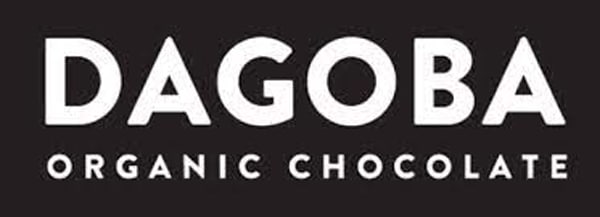
Ingredients
- Organic Dark Chocolate (Cacao Beans [Sourced from Dual-Certified Organic and Rainforest Alliance Certified Farms]
- Cane Sugar [Sourced from Dual-Certified Organic and Rainforest Alliance Certified Farms]
- Cacao Butter [Sourced from Dual-Certified Organic and Rainforest Alliance Certified Farms]
- Non-GMO Soy Lecithin [Organic])
- Milk (Organic)
Nutrition
| Serving Size: | 1.00 bar | % Daily Value* |
| Amount Per Serving | ||
| Calories | 290 | |
| Calories from Fat | 230 | |
| Total Fat | 27g | 42% |
| Saturated Fat | 17g | 85% |
| Trans Fat | 0g | |
| Cholesterol | 0mg | 0% |
| Sodium | 0mg | 0% |
| Total Carbohydrate | 19g | 6% |
| Dietary Fiber | 8g | 32% |
| Sugars | 8g | |
| Protein | 7g | |
| Vitamin A | 0% | |
| Vitamin C | 0% | |
| Calcium | 2% | |
| Iron | 15% |
- *Percentage Daily values are based on a 2,000 calorie diet.Your Daily values may be higher or lower depending on your calorie needs
Pictures
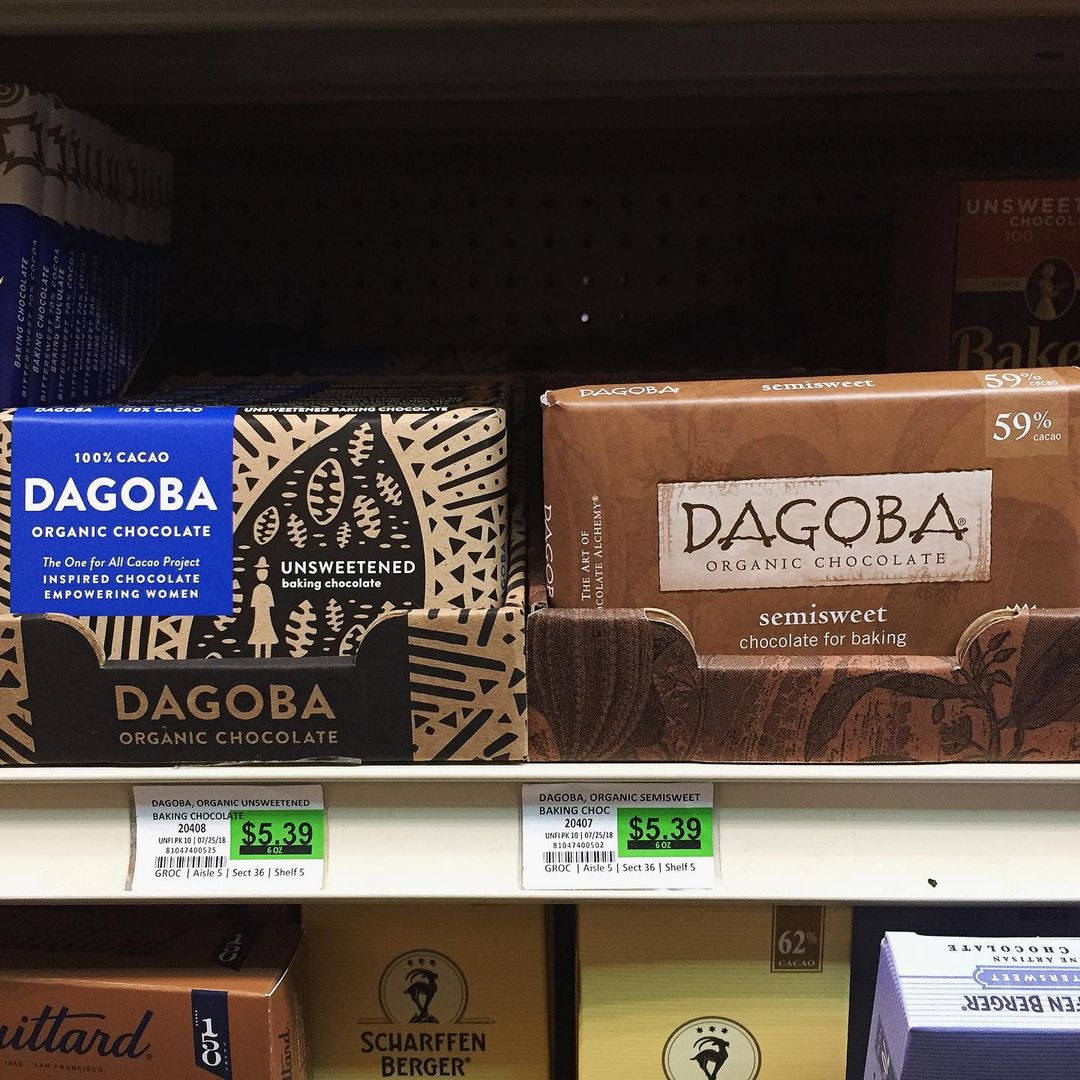
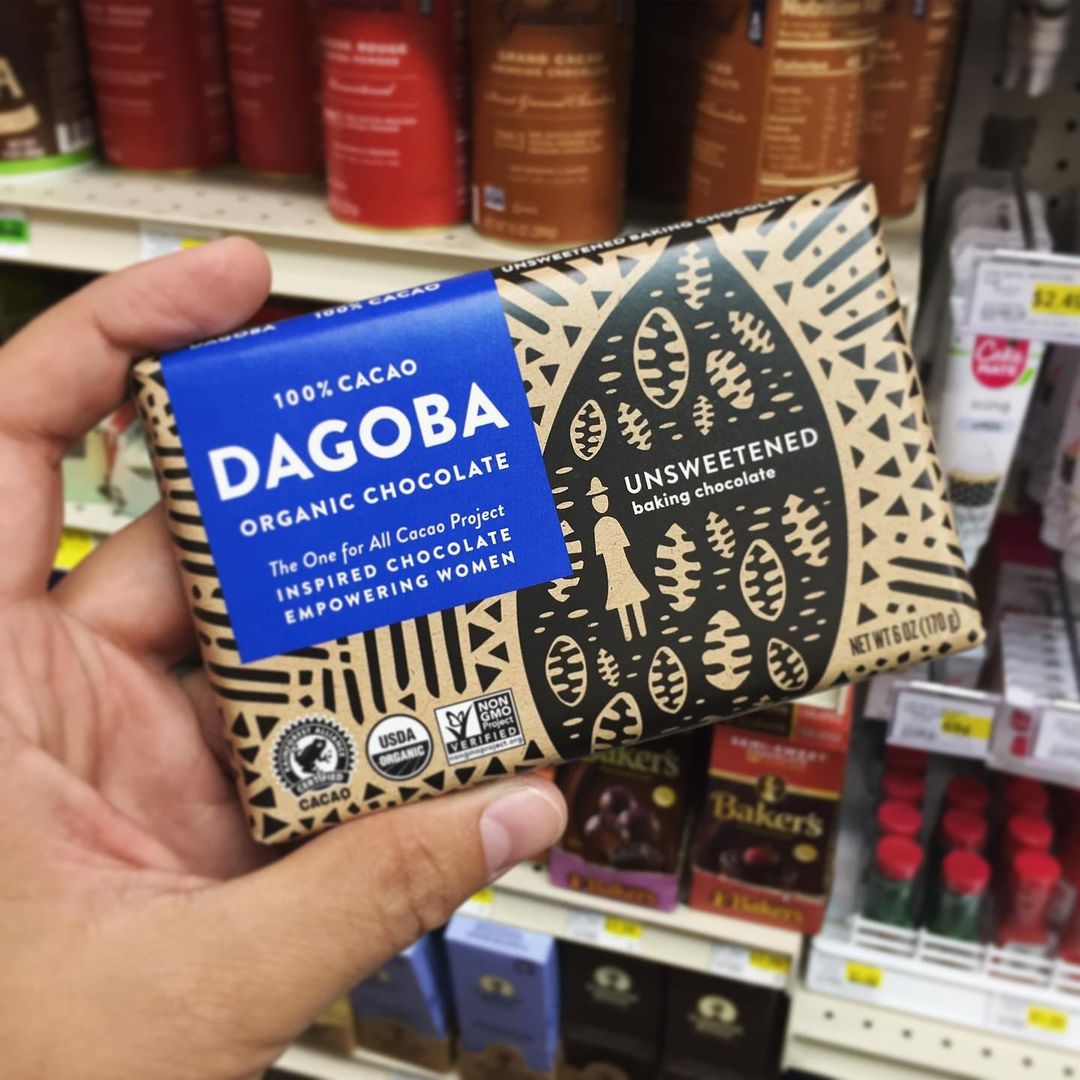
Ads
Dagoba ads often show an image of the candy bars that are stamped with the clever and simple design that is one of the new wrappers. Hershey always makes sure to mention that their Dagoba products are excellent in smoothie bowls and for cooking as well. This is a unique concept for most candy bars, but since Hershey also sells regular cooking chocolate and their Hershey Bars have long been used in cooking and baking, this makes sense.
This is a really unique organic brand in that it is offered in such a wide market and that it is suggested to be used for so many things besides just eating for enjoyment. This is a key benefit for the brand now that Hershey is at the reins and it has made it possible for more sustainable chocolate to be available at reasonable prices in most places in the US. The Hershey brand has made a big leap in being committed to sustainability and fair trade practices and this is one of their key advertising efforts on their Facebook and branding pages.
Hershey has also put a lot of effort into advertising and promoting this product lineup on their Facebook page and they frequently take requests from people for potential new flavors and field questions directly about ingredients and marketing as well as the potential for other new products in the future.
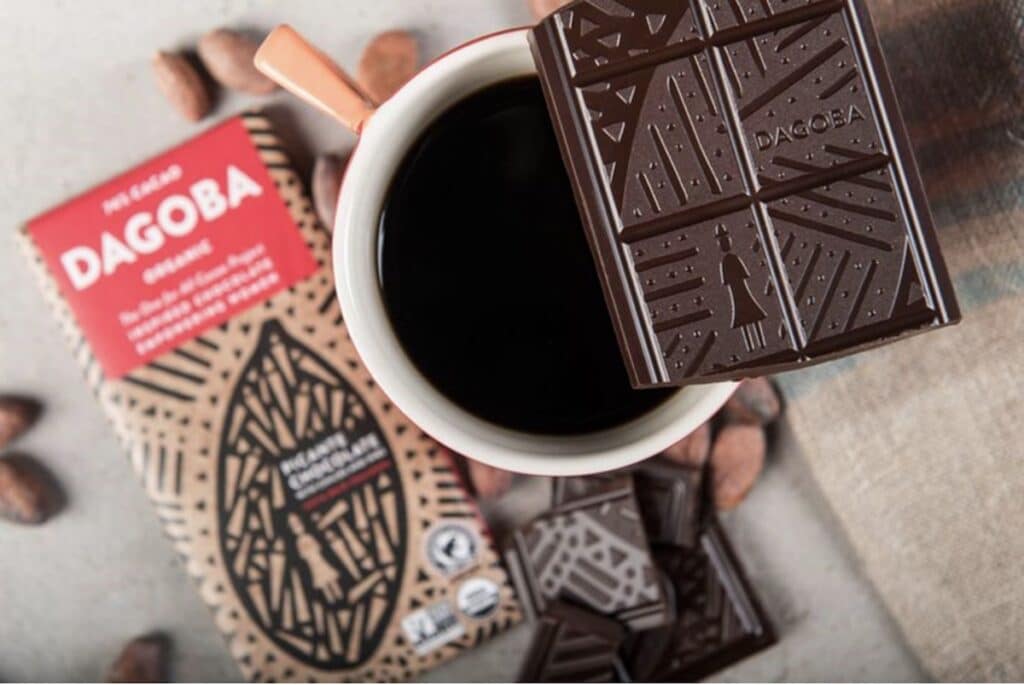
The interactive nature of this bar’s advertising presentation is really different than what a giant like Hershey’s would normally offer to consumers, but they are aware that the brand came along with a loyal following who loved the product when it was just a local brand that was known mostly in Oregon. It is smart of them to have stuck to this business model in ways that they usually do not.
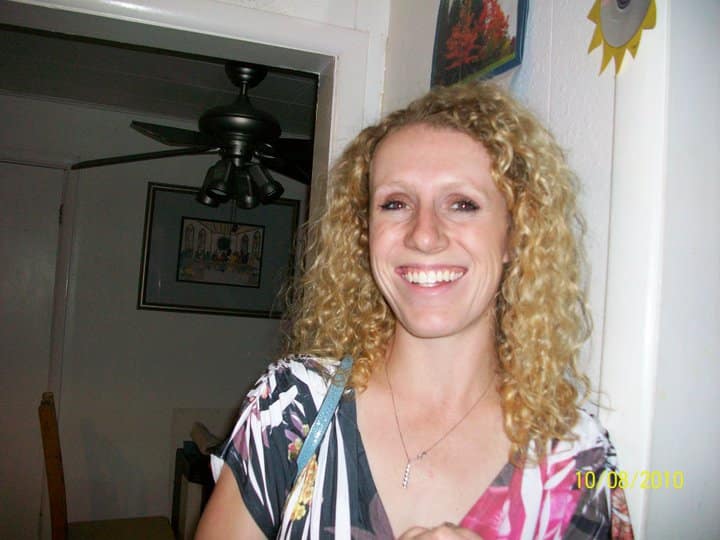
My name is Brianna and I love writing on all topics. Candy history fascinates me and I am passionate about sharing my love of this topic with everyone else!
Please leave a review or any memories of this snack in the comments below. Thank you!
Click here for a full A-Z list of Snacks and Candy
